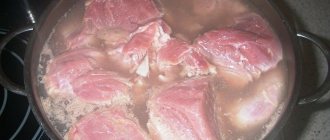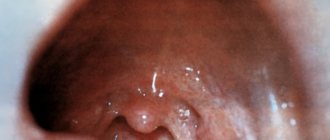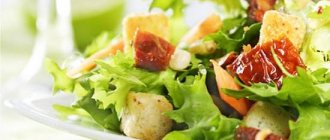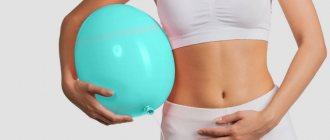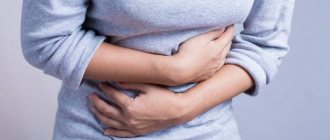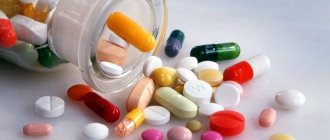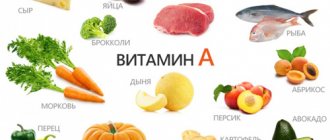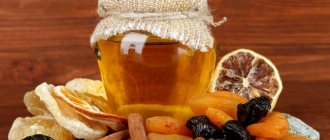Every year, the number of people in the world who go on the warpath with excess weight increases. At the same time, many of them confuse two concepts - “overweight” and “obesity”. In the case of obesity, we are talking about a condition that not only spoils a person’s appearance, but also poses a real threat to his life and health.
Diet for obesity is the main way to help fight this problem. And although the benefits of diet therapy are invaluable, it should be carried out under the supervision of specialists in the field of endocrinology and nutrition.
Obesity is a disease, and it can only be overcome through the joint efforts of the doctor and the patient. A dietary table should be prescribed especially for such people 8. What are the features of dietary nutrition for obesity, what goals does the doctor pursue when recommending that patients adhere to a therapeutic diet, and what might be an approximate menu for the week?
Therapeutic diet for obesity
| Power scheme | Number of proteins (g) | Number of fats (g) | Number of carbohydrates (g) | Calorie content |
| Treatment table 8o | 50 | 30 | 50 | 500-700 kcal |
| Treatment table 8a | 70 | 55 | 75 | 1000-1200 |
| Treatment table 8 | 100 | 85 | 130 | 1500-1700 |
It is most rational to start a diet with minimal calorie restriction, so the patient first of all switches to diet No. 8 (it is often prescribed in sanatoriums to normalize the patient’s body weight).
Treatment table No. 8 allows you to eat with virtually no restrictions on taste, while providing sufficient caloric intake so as not to feel hungry and at the same time effectively lose weight. The diet also involves eating seafood containing iodine and amino acids. The low level of carbohydrates in these foods helps in treating obesity.
In addition to the main products on the diet, it is recommended to use fasting days - protein, fat, etc. The daily meal plan for such days is standard and includes all main meals.
Principles of therapeutic and preventive nutrition
- Low calorie diet
- Minimizing simple carbohydrates in the diet
- Minimizing the consumption of animal fats by replacing them with fats of plant origin. The effectiveness of healthy fats is due to their lipolytic properties, which ultimately promotes weight loss.
- The patient should not experience hunger while on a diet; this is done by including low-calorie foods (vegetables, fruits) in the menu.
- Small meals 6 times a day, which eliminate hunger, along with the exclusion of foods that stimulate appetite.
- To restore the water-sodium balance, salt should be limited to 4 g, and water consumption to 1.5 liters. per day.
- Using fasting days.
Diet rules
Nutrition for grade 1 obesity should include: 25% fat, 60% animal and plant proteins, 15% carbohydrates, salt - no more than 8 g. In addition, the following rules should be followed:
- In the morning, the patient’s diet should be dominated by nuts, cereals, fruits (no more than 2 pieces), in the afternoon and evening - vegetables, meat;
- the ideal serving size is the palm of your hand; such a volume does not allow the stomach to stretch too much, while the body receives nutrients;
- the longest interval between meals should not exceed 3 hours;
- per day you need to drink about 1.5-2 liters of liquid (compotes, mineral water, tea, fruit drinks);
- From the menu you should completely exclude semi-finished products, alcohol, fast food, seeds, chips, as well as all high-calorie dishes that are often used for quick snacks;
- meals should be fractional (5 times per day);
- proper cooking - baking, stewing, boiling;
- consumption of sugar and sweets is prohibited;
- the last meal should be no later than 2 hours before the person goes to bed;
- daily calorie content – no more than 1500 kcal.
Diet for obesity. Sample diet menu
| Name of the dish | Total (years) | Number of proteins (g) | Number of fats (g) | Number of carbohydrates (g) |
| 1st meal | ||||
| Cottage cheese | 90 | 12.6 | 10.2 | 8.2 |
| Carrot | 180 | 3.8 | 11.2 | 15,6 |
| Tea | 180 | No | No | No |
| 2nd meal | ||||
| Cabbage salad | 150 | 2.1 | 4,8 | 7.3 |
| 3rd meal | ||||
| Vegetable soup | 180 | 1.6 | 6,2 | 9,02 |
| Boiled meat | 100 | 14,2 | 9.5 | No |
| Green pea | 60 | 1.6 | 0,2 | 4.0 |
| Apple | 90 | 0.3 | No | 10,8 |
| 4th meal | ||||
| Cottage cheese | 110 | 14.2 | 12.0 | 9,3 |
| Herbal collection | 200 | No | No | No |
| 5th meal | ||||
| Boiled fish | 110 | 20 | 5,2 | 0,03 |
| Vegetable stew | 120 | 2.2 | 6,3 | 14,7 |
| 6th meal | ||||
| Ryazhenka | 200 | 5,5 | 7,1 | 8.8 |
| Additionally | ||||
| Rye bread | 125 | 6.3 | 1,2 | 54.2 |
Recommended foods on a diet
- Bread, bran. Bread should be excluded from the diet if the patient’s weight does not decrease on the background of the previous diet. Bread products contain a large amount of carbohydrates, therefore, the amount of bread consumed should be reduced, and all other products should be left in the same proportions.
- Vegetable soups. It is best to prepare soups with vegetables, without adding meat, occasionally adding meat or fish broths to the diet.
- Beef, chicken and turkey are allowed at least once a week. It is recommended to boil the meat.
- The fish is cooked boiled. If you really want to, you can fry fish once a week. In general, the daily diet should be about 0.5 kg of protein from meat, fish and dairy products. To increase the calorie content of the diet, it is allowed to add seafood.
- Greens, boiled vegetables.
- Cereal side dishes, pasta, beans.
- Eggs
- Milk and fermented milk products, cheese, cottage cheese.
- Fruits
- Salads.
- Herbal teas, juices, mineral water (the amount of fluid consumed should fluctuate within 1 liter per day)
- Vegetable fats (for example, olive oil).
Prohibited for consumption: sweets, buns, chocolate, smoked meats, pickles, peppers, alcohol.
Diet therapy using low-calorie foods is carried out along with constant weighing of body weight.
In addition to eating the recommended foods, you need to systematically, every 7 days, also carry out fasting days with the consumption of mainly one product: meat, cottage cheese, cabbage, apples, watermelons, kefir, milk, etc. Food consumption is divided into 5 meals.
At the same time, completely refusing food for 7-14 days and drinking only water and tea is an ineffective way to lose weight.
Against the background of simultaneous obesity with gout, or atherosclerotic disease, the diet should exclude meat and fish, as well as offal. Meat dishes should be served only after boiling or stewing. Other types of heat treatment are unacceptable. You can exchange fish and meat dishes for dishes with cottage cheese. In the presence of diseases of the digestive system, the diet should exclude coarse fiber, which irritates the gastrointestinal tract. Vegetables must be grated and boiled before eating. Meat and fish are boiled or steamed. Juices, jelly and compotes are also allowed.
In the hospital, obese patients are prescribed diet No. 8 with a calorie reduction to 1200 kcal.
What foods are allowed for consumption if you are obese?
A diet for obesity does not limit a person’s variety of dishes. However, all of them must be prepared from products that are approved for consumption. These include:
- rye or whole grain bread, as well as bakery products made from wholemeal flour;
- soups in vegetable broth with the addition of cereals;
- cabbage soup and borscht cooked in diluted meat broth;
- soups cooked in diluted fish broth;
- first courses with meatballs;
- lean varieties of fish and meat;
- 1-2 eggs per day, hard-boiled or in the form of an omelet;
- low-fat dairy and fermented milk products;
- low-fat cheeses;
- butter, provided that its daily dosage does not exceed ½ teaspoon;
- vegetable oil used exclusively for seasoning dishes;
- crumbly porridge from pearl barley, barley and buckwheat;
- green vegetables, which include cabbage, cucumbers and zucchini;
- unsweetened berries and fruits;
- jellies, mousses, compotes and fruit drinks from berries and fruits with added sweeteners;
- red and white sauces;
- black and green tea, decoctions and infusions of herbs, rosehip and hawthorn decoction, chicory drink, black coffee or coffee with milk.
Food pyramid for obesity
Diet for obesity
| Name of the dish | Total (years) | Number of proteins (g) | Number of fats (g) | Number of carbohydrates (g) |
| 1st meal | ||||
| Meat | 80 | 11,5 | 7,6 | No |
| Vegetable salad with butter | 125 | 1.1 | 7.9 | 10.3 |
| Tea | 180 | 1.1 | 1.2 | 1,9 |
| 2nd meal | ||||
| Apple | 80 | 0.25 | No | 10,2 |
| 3rd meal | ||||
| Vegetable soup | 200 | 1,8 | 5,4 | 13,6 |
| Boiled fish | 90 | 15,0 | 3,9 | 0.02 |
| Braised cabbage | 125 | 1.3 | 1.87 | 4,4 |
| Apple compote | 180 | 0,19 | No | 8,7 |
| 4th meal | ||||
| Milk | 200 | 5.8 | 6.7 | 8,5 |
| 5th meal | ||||
| Meat rolls with eggs | 100 | 20,2 | 18,3 | 15.4 |
| 6th meal | ||||
| Kefir | 200 | 6,2 | 6,8 | 8,9 |
If the patient tolerates this diet plan well, the diet will be carried out until the weight stops at a certain point. After weight loss has occurred, the patient switches to a more strict diet with a calorie content of up to 800 kcal.
Prohibited and permitted products
For first-degree obesity, a strict diet is used, because... We are talking about the patient's health. Therefore, a person with such a disease must know the list of permitted products, and those that are best avoided:
| Prohibited foods | What can you eat if you have stage 1 obesity? |
|
|
Article on the topic: Kinesiotherapy in neurology or movement you are life
Nutrition for obesity. Menu for every day
| Name of the dish | Total (years) | Number of proteins (g) | Number of fats (g) | Number of carbohydrates (g) |
| 1st meal | ||||
| Vegetable salad | 180 | 3.2 | 14.1 | 9.2 |
| Herb tea | 120 | No | No | No |
| 2nd meal | ||||
| Apples | 90 | 0.3 | No | 10.8 |
| 3rd meal | ||||
| Vegetable soup | 200 | 1.4 | 5.9 | 9.0 |
| Chicken breast | 90 | 17.7 | 9,8 | No |
| 4th meal | ||||
| Herb tea | 200 | No | No | No |
| 5th meal | ||||
| Vegetable stew | 120 | 2.53 | 6.4 | 15.0 |
| 6th meal | ||||
| Kefir or fermented baked milk | 200 | 5.5 | 7.0 | 8.8 |
Limiting nutritional value to 700 kcal is considered limiting. A subsequent reduction in calories can promote ketosis and harm your health. Considering that in the latest version of the diet there is a significant decrease in protein food intake, it should be prescribed for a short period of time. The recommended duration is 15-20 days, provided the patient is in a hospital. When preparing a diet, there is no need to immediately transfer the patient to the most restrictive version of the diet. At first, the diet will seem most effective due to the fact that a large amount of fluid accumulated in the body is released. The overall effectiveness of the diet should be determined by such criteria as: reducing the patient’s body weight, normalizing well-being, improving muscle tone and central nervous system function.
All patients who are predisposed to obesity should not lie or sit after eating, especially if possible.
The diet must be followed for a long period of time; the duration of therapeutic nutrition is calculated on an individual basis. Only following a diet with the same level of physical activity will not contribute to rapid weight loss in patients. In addition to physical therapy, the patient needs to exercise sufficiently, for example, brisk walking. In the summer, walking can be combined with swimming in ponds or pools, and you can also add cycling. In winter, physical activity can continue with the transition to skiing and skating.
"Leveton Forte" - the best assistant on a diet
Obese people have a deficiency of pyridoxine (vit. B6). Due to the fact that the lack of this vitamin has internal causes, it is rational not only to add it with food, but also to take medications that include it in its natural form. A unique drug of its kind is the drug “Leveton Forte”, which contains all vital minerals and vitamins, including vitamin B6, as well as amino acids, antioxidants and active components that normalize hormonal levels, which is important for obesity.
In addition, excellent drugs for weight loss are products from the new “Fitness & Life” line - “Kilo-Light”. The “Kilo-Light” line consists of 3 drugs “Kilo-Light” (day), “Kilo-Light” (morning) and “Kilo-Light” (evening). The first two drugs will help reduce appetite in the daytime and morning, and taking “Kilo-Light” in the evening will enhance fat burning at night.
The presence of potassium and other active components in the composition of the drug “Dandelion P” leads to rapid weight loss, and therefore, the drug is also recommended for the treatment of metabolic syndrome and obesity.
Additionally, you can include vitamins and microelements of natural origin “Apitonus P” in your diet, which also promote rapid weight loss.
The effectiveness of the diet is monitored through constant monitoring of body weight, blood tests and determination of the patient's lipid profile. Thus, therapy aimed at treating obesity must be carried out in a hospital setting.
Features of the diet for obese children
Obesity of the 1st degree often occurs in 90% of school-age children. The difficulty of organizing nutrition for small patients suffering from this pathology is that the child’s body, on the one hand, must receive a sufficient amount of proteins, microelements, and vitamins; on the other hand, children who are prone to weight gain must be limited in food. Rules for following a diet for stage 1 obesity:
- the break between meals should not be more than 3 hours;
- Margarine, pork, lamb, and beef fats should be excluded from the patient’s menu;
- pasta, dough dishes (pancakes, dumplings, dumplings) should rarely be given to an obese child;
- Unsweetened fruits and vegetables should predominate in the diet;
- dinner – no later than 7 pm;
- meals should be fractional (5 times a day) and in small portions;
- High calorie foods are best given to children in the first half of the day;
- food must be chewed thoroughly and not rushed;
- three-year-old children should eat 80 g of meat per day, preschoolers - 100 g, from 7-12 years old - 150 g;
- Vegetable juices are useful for a small patient: beetroot, tomato, carrot, cabbage;
- Starvation treatment is contraindicated for a child.
HEALTH NEWS:
ALL ABOUT SPORTS
Reasons to play sports: top 5. Train before it's too late
SPORTAuthor: admin4 September 28, 2018
Things at work, household chores, social networks - all this mercilessly devours our free time. Even going to the gym after 30 years is not easy. At the same time, banal exercises with dumbbells no longer suit you and you want something more. What are the main reasons to play sports? Where can I get the motivation to sign up for a swimming class, martial arts class, or just play…
Read more
Legendary vegetarian athletes: top 5
AthletesAuthor: avtorJuly 54, 2018
Vegetarian athletes today surprise few people. Many sports stars consciously choose this path and only end up winning. What's more surprising is the fact that this practice existed long before vegetarianism became mainstream. The great athletes of the past refused meat on principle, but at the same time continued to break record after record. Who are these heroes, and why...
Read more
ABOUT HEALTH
Fracture of the nasal bones in athletes. There is a way to recover quickly!
BonesAuthor: admin4August 12, 2020
A fracture of the nasal bones is one of the most common household and sports injuries. You can get it with equal success both in the boxing ring and by running into a doorframe in the dark. This damage, at first glance, is not dangerous. However, delaying going to the doctor (and even more so letting things take their course) is fraught with serious...
Read more
Strengthening bones in sports. Be as strong as steel!
HEALTH, BonesAuthor: admin4 July 30, 2020
Strengthening bones is one of the most important tasks for every athlete.
A strong skeleton is the key to high results in martial arts, weightlifting, running and any other sport. It also provides protection against stress fractures, injuries caused by repetitive stress. Research shows that sports nutrition high in calcium-containing foods may not prevent injury. What do you need... Read more


